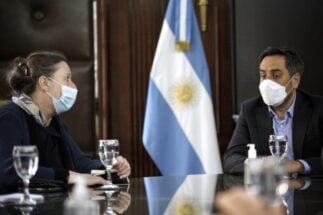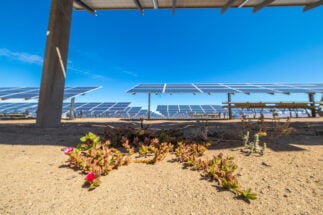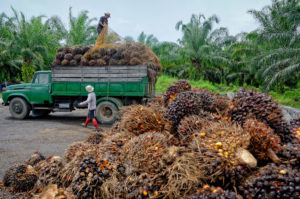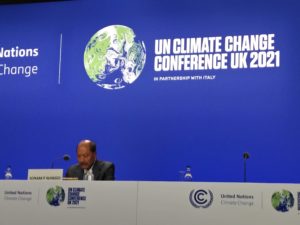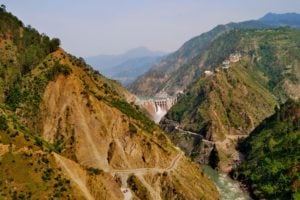In August, Alok Sharma, the UK’s president of COP26, the upcoming UN climate talks, cited one of the top priorities of the talks as “getting finance flowing to climate action, both public and private, especially to emerging markets and developing economies, and particularly for adaptation”.
But two months later, finance remains a crunch issue. Climate-vulnerable countries are still complaining that the US$100 billion a year promised more than a decade ago is yet to materialise, having reached just short of $80 billion in 2019, according to an official assessment by the Organisation for Economic Cooperation and Development (OECD).
Poverty campaigners at Oxfam have estimated from current pledges and plans that wealthy governments will reach only $93-95 billion per year by 2025, leaving climate-vulnerable countries out of pocket a total of $68-75 billion between 2020 and 2025. Despite a doubling of US finance subsequently announced at the UN General Assembly in September, low-income countries are not happy.
“The $100 billion is quite an abstract number that was obviously pulled out of thin air 12 years ago, it doesn’t necessarily reflect today’s financing needs. However, its delivery is a point that enables the rebuilding of trust, as well as renewing of partnerships among nations,” said Sara Jane Ahmed, finance advisor for the Vulnerable Twenty (V20) Group of Ministers of Finance of the Climate Vulnerable Forum, speaking on a podcast for the World Resources Institute (WRI).
Finance is also critical to lower-income countries being able to meet their domestic emissions reductions targets, as many have based their plans on securing cash from richer nations.
The financing gap is not the only issue at stake. Almost three-quarters (71%) of climate finance provided by developed countries has come in the form of loans paid through multilateral development banks (MDBs), according to the OECD, which found that finance paid as direct grants from donor countries made up just 27% of the total.
The $100 billion is quite an abstract number that was obviously pulled out of thin air 12 years ago, it doesn’t necessarily reflect today’s financing needs
Around $24 billion – the equivalent of half the loans provided – were not concessional loans with below-market rates, according to Oxfam. It calculated that the “grant equivalent” – the true value of the loans once repayments and interest were deducted – was less than half of the amount reported.
MDBs provide climate finance using their own resources as well as channeling money from public and private donors through funds such as the Green Climate Fund and Climate Investment Funds (CIFs). In 2020, MDBs committed $66 billion, up from $1.6 billion in 2019, according to an official report by nine development banks including the Asian Infrastructure Investment Bank, the European Bank for Reconstruction and Development, and the World Bank.
More than half ($38 billion) was committed to low- and middle-income economies, and the banks have pledged to increase this to $50 billion by 2025. The majority of this (76%) was targeted at mitigation measures such as clean energy investments.
Though emissions reduction is obviously a priority for the poorest countries, this is not where the finance challenge lies, says Clare Shakya, director of the Climate Change Group at the International Institute for Environment and Development (IIED). “The economics of reducing emissions has largely been won – for most mitigation measures you can bring in private finance, it’s much easier than for adaptation. So much of what has to happen for adaptation is for the public good, but doesn’t necessarily have a financial return,” she says.
A focus on adaptation at COP26
The lack of finance for adaptation is high on developing countries’ agenda for COP26. UN Secretary-General António Guterres has called for 50% of the total share of climate finance to be spent on building resilience. This is to cope with the climate emergency, which is already “widespread, rapid and intensifying”, according to the latest report from the IPCC (Intergovernmental Panel on Climate Change), published in August.
“Global discussions seem to be stuck in the 1990s or 2000s when mitigation was the priority,” says Maria Laura Rojas, co-founder and executive director of Colombian think tank Transforma. “As the IPCC report stressed, there is one degree of warming already locked in, so it shouldn’t be so uphill to have a conversation on adaptation.”
Of the overall climate finance in 2019, 25% went to adaptation (up from 21% in 2018), 64% went to mitigation (down from 70% in 2019), and the remainder financed both activities jointly, according to the OECD. Just under a quarter of monies paid out by MDBs went to adaptation.
Poorer nations want not just increased funding for adaptation, but also direct access to it, as currently around 20% of what is paid out is lost in administration fees as the funds are channelled through intermediaries such as MDBs, says Shakya.
Yue Cao, senior research officer at the Overseas Development Institute agrees there are issues in accessing finance, both for mitigation and adaptation. Governments do not necessarily have the capacity to demonstrate the environmental and social standards that are required, especially in those countries where there is conflict.
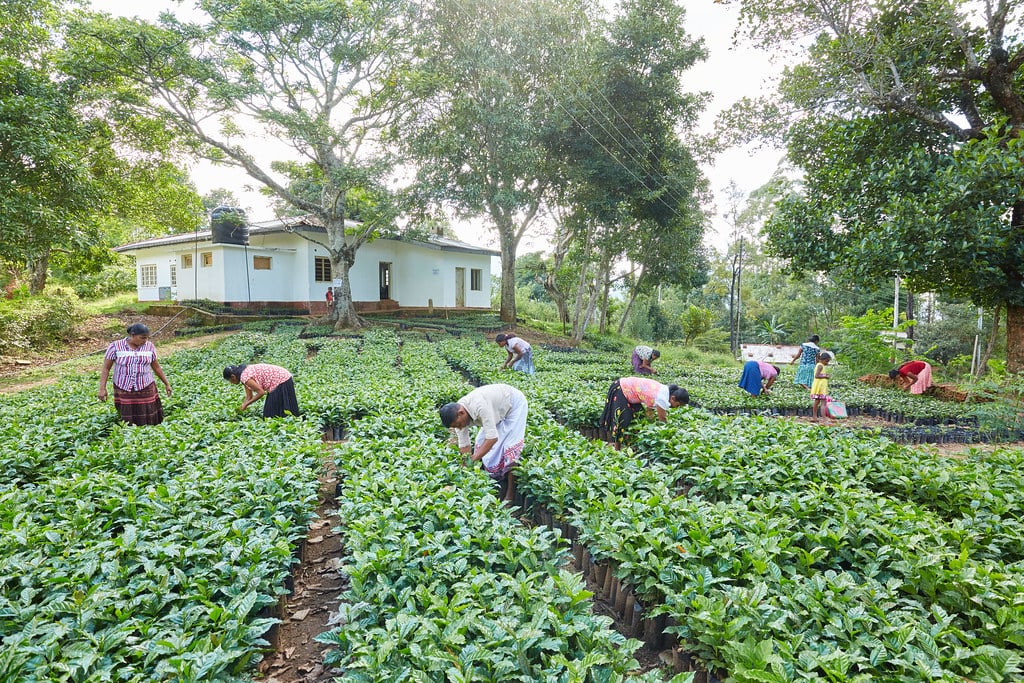
“If an area of the country is under the control of non-state groups, then it’s often impossible for programme teams to access those areas to gather socio-economic information to establish project baselines,” he says.
Meanwhile, Covid-19 has left both low- and middle-income countries with debts that threaten to delay climate action. Research by the IIED predicted that the pandemic would cause the average debt-to-GDP ratio in Africa to increase to over 70%, from 60% in 2019.
Reform the development banks
This situation has exacerbated emerging and developing countries’ lack of confidence about receiving sufficient finance for decarbonisation. Even major emerging economies such as India are facing significant barriers to financing economically viable clean energy projects at the scale required, according to think tank E3G.
It believes that the answer lies in reforming multilateral and bilateral development finance institutions to significantly expand their financial firepower for climate outcomes. Improved risk management and capital increases could increase the leverage of private capital and make public money go further, the think tank says.
For example, by modelling renewable energy financing in the major MDBs, E3G estimates that financing of renewable energy projects from public and private sources could increase six-fold by 2030 from the current $7.4 billion a year. An eight-fold increase would be possible through a modest capital increase, it calculates.
But Julian Havers, programme leader of public banks at E3G, is not confident that the World Bank is interested in such radical reform. The World Bank missed its previous targets on mobilising private capital, he says. On average, it is only able to mobilise less than $1 from the private sector for every $1 of climate finance it provides.
At its October meeting with the IMF, the World Bank is now asking its shareholders for more capital to support increased climate-related investment, and claims it can leverage up to ten times this amount in private capital. It can be no surprise that shareholders are sceptical, given the poor track record of bank president David Malpass, Havers says.
An analysis by E3G of 800 MDB transactions in clean energy shows that MDBs can increase the funding they provide by a factor of six on existing capital, or by eight with additional capital injection. But this would require deep structural reform, including a more modern approach to the management of risk, staff incentives and using the opportunity provided by the sustainability-linked bond market in many economies.
$700 billion of green, social and sustainability bonds were issued in 2020, but so far this opportunity has bypassed many regions in the developing world, Havers says, meaning there is a major opportunity to “level this up” across developing and emerging economies.
The IMF and World Bank meeting this month is also expected to see the announcement of the IMF’s Resilience and Sustainability Trust, which would support access to more affordable financing by lending at cheaper rates and with longer maturities than the IMF’s traditional lending terms. Its aim is to support policy reforms to help build economic resilience and sustainability, especially in middle-income countries, low-income countries and small states.

The fund could be used to re-channel some of richer countries’ Special Drawing Rights (SDRs) – an international reserve asset – towards low- and middle-income countries to pay for resilience, such as against climate change or pandemics.
In August, the IMF allocated the equivalent of $650 billion in SDRs to all member countries. However, its quota system means the majority goes to wealthy countries, with emerging and developing countries receiving about $275 billion, and low-income countries around $21 billion.
The new fund will allow countries to deal with both their debt and respond to climate change, Shakya says. Recovering from extreme weather caused by climate change is exacerbating debt levels of poor countries, which damages their credit rating, which in turn raises the cost of capital they want to borrow, she says.
The finance goal at COP26
At COP26, negotiations will begin on a new finance regime through to 2025, when a new finance goal is mandated to come into effect by the Paris Agreement. The V20 group of climate-vulnerable countries has called for a floor of $500 billion over a five-year period, implying a higher sum in the final years to balance prior shortfalls and annually average more than $100billionn.
The V20, COP26 presidency, and UN secretary-general are also calling for the plan to include an increased share of finance for climate adaptation, and many developing countries want an increased share of grant-based finance.
Whatever process is decided on for coming up with the post-2020 finance goal, its transparency will be crucial to ensure trust, Shakya says. Adaptation finance in particular is very opaque and not reported in an easily understandable manner, leading to a lack of trust from the poorest countries, she adds. The IIED scrutinised how much adaptation finance was reaching the least developed countries, and could only verify half the finance reported by donors, Shakya says.
“The Paris Agreement is based on three legs of a stool – mitigation, adaptation and finance. If any of those legs break, the agreement crumbles,” she says.


